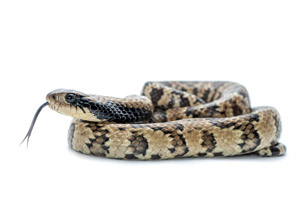
Snake Bites
To the casual observer, snakes are so well hidden and camouflaged that you rarely see them. The threat of snakebite is minimal if you leave them alone. The knee-jerk reaction of many people when encountering a snake is to try and kill it. The majority of snakes are non-venomous (not poisonous) and are harmless to humans. Death from snakebite is rare. More people die each year as a result of a bee or wasp sting than from a snakebite.
The Texas Panhandle is home to three types of poisonous snakes: Western Diamond Back & Prairie rattlesnakes, and the Massasauga. The snake's defense when provoked, startled, or threatened is to escape. If given no alternative they will fight. The majority of bites are "dry bites" no venom was injected.
What to do if you are bitten
 Stay Calm
Stay CalmCall 911
DO NOT attempt to capture or kill the snake
Keep the limb below the level of the heart
Create a loose splint to immobilize the limb and reduce the pain
Remove any constricting items: rings, watches, tight clothing
DO NOT apply a tourniquet. You could lose a limb if applied improperly
DO NOT make cutes near the site. This only increases the injury
DO NOT attempt to suck the venom out. Germs form your mouth can cause an infection
DO NOT apply ice. This can freeze the skin causing further damage
DO NOT apply any type of electric current
Prevention
Avoid areas where snakes may be hiding, such as under rocks and logsAvoid picking up or playing with snakes
DO NOT provoke a snake. Don't hit the snake, throw rocks
at it, try to catch it, harass it, or kill it
Tap ahead of you with a walking stick before entering an area where you cannot see your feet
When hiking or working in areas known to have snakes, wear long pants and boots if possible
